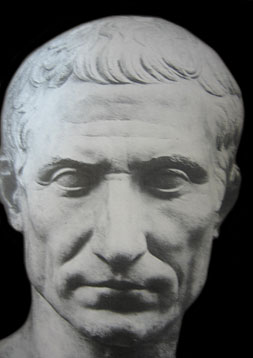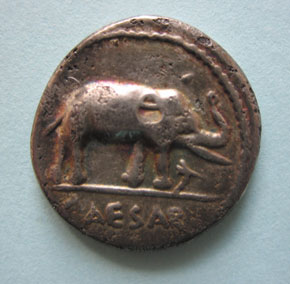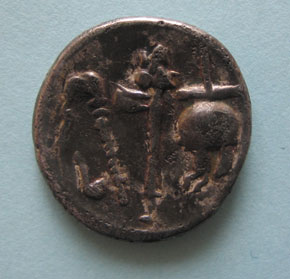 Pages 46-47
Pages 46-47 by Irada M.Najafova and Ilyas Babayev of Azerbaijan´s National Academy of Sciences
Gaius Julius Caesar (110-44 BC) is one of the best known Roman commanders, politicians and statesmen. His policy of extending the Roman Republic to the west, including his landing in Britain, is well-known. His policy of extending Rome to the east, and specifically ancient Azerbaijan, has received less coverage and is being presented here for the first time.
Caesar and Ancient Britain
Caesar led Rome´s expansion to the west, including the Gallic Wars of 58 to 51 BC and two expeditions to Britain in 55 and 54 BC. Although Plutarch wrote in his biography of Caesar that Britain was not a rich country, historians think that it was still attractive to Rome, because of its economy and metals. After Caesar conquered Gaul, Britain was next in line.
However, neither of Caesar´s expeditions to Britain resulted in the acquisition of territory for Rome. Nevertheless, they established trade links and brought Roman trade and money to Britain. As a result, Roman coins bearing Caesar´s head appeared in Britain.
Caesar and Ancient Azerbaijan
Rome´s push eastwards under Caesar began later than the western campaigns. Caesar had been to the east in his youth and returned there after his western campaigns and victory over Pompey in Rome´s civil war. According to historians Plutarch and Suetonius, shortly before his death Caesar planned an eastern campaign. He intended to defeat the Parthians, then to advance along the Caspian Sea shore to the Caucasus and Pontus on the south coast of the Black Sea. This route would have taken him across what is now Azerbaijan and at that time was Midia-Atropatena and Caucasian Albania. According to the geographer Strabo, Midia-Atropatena bordered on Parthia and the Caspian Sea, while Caucasian Albania bordered on the Caspian Sea and Caucasus.
Media-Atropatena and Caucasian Albania had attracted Roman interest after the campaigns of Lucullus and Pompey. Maybe when Caesar planned his eastern campaign, he wanted to eclipse the success of his rival Pompey. It is also possible that the ever active Caesar wished to gain even more success. Whatever the case, Caesar deliberately planned his eastern campaign. Like ancient Britain, the land of ancient Azerbaijan was attractive to Rome.
However, Caesar could not carry out his eastern campaign. Rome did make contact with Midia-Atropatena and Caucasian Albania and Roman coins, gems, jewellery and other goods reached these lands.
Caesar´s Coin in Qabala
Just one of Caesar´s coins has been found in Caucasian Albania. The Julius Caesar coin was found in 1978 in a stratum from the 1st century BC during excavations in the ancient city of Qabala. (The ancient city of Qabala, once the capital of Caucasian Albania, is now the village of Chukhur-Qabala, just outside modern-day Qabala in Azerbaijan.)
The coin was not found in the treasury, but in the market square. This implies that Caesar´s coins were accepted in payments in the local bazaars.
Description of the coin:
Weight: 3.75 g
Diameter: 1.8 cm
Type: Denarius
Metal: silver
Obverse: shows an elephant trampling
a serpent and bears the inscription CAESAR
Reverse: trophies
Date: 50 BC
This type of coin features in various numismatic catalogues, beginning with H. Cohen´s catalogue at the end of the 19th century. Historians interpret the image on the reverse of the coin in different ways: they see it as a symbol of the power of the priesthood (Caesar held the position of priest from 63 BC) or as a sign of the spoils of war.
Three coins of this type have been found in Cambridgeshire, Berkshire and Norfolk in Britain and are kept at the British Museum.
Conclusion
The Caesar coins found in Britain and the single coin so far found in Azerbaijan, as well as the works of ancient writers, allow us to say that though Azerbaijan and Britain were far away from each other they both fell into the sphere of Roman interest in the time of Julius Caesar.The authors are glad to thank Mr Richard Abdy, Curator of Roman Coins at the British Museum, for his help with this article, and Ms Konul Aliyeva for her help with translation.




